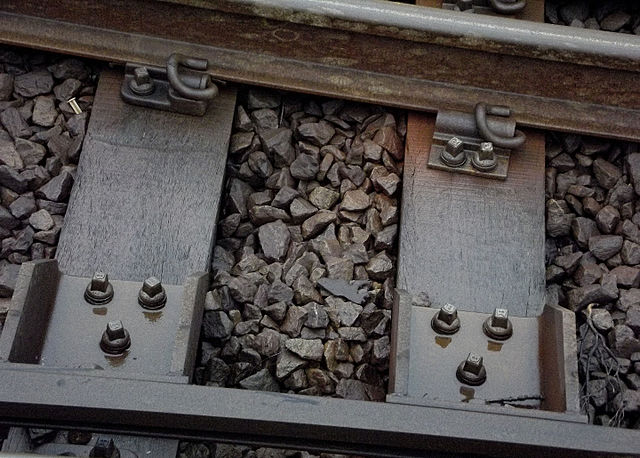Railway signalling (BE), or railroad signaling (AE), is a system used to control the movement of railway traffic. Trains move on fixed rails, making them uniquely susceptible to collision. This susceptibility is exacerbated by the enormous weight and inertia of a train, which makes it difficult to quickly stop when encountering an obstacle. In the UK, the Regulation of Railways Act 1889 introduced a series of requirements on matters such as the implementation of interlocked block signalling and other safety measures as a direct result of the Armagh rail disaster in that year.
A Class 66 locomotive (right) is waiting at a red signal while a First Great Western passenger train (left) crosses its path at a junction.
A block signal and a 130 km/h speed limit at kilometer post 547 in Iisalmi, Finland
Short signal blocks on the Toronto Transit Commission subway system. A train (not visible) has just passed the most distant, leftmost signal, and the two most distant signals are red (stop and stay aspect). The next closest signal is yellow (proceed with caution), and the nearest signal shows green (proceed).
Traditional mechanical signals on display at a railway station in Steinfurt, Germany
A railway track or railroad track, also known as a train track or permanent way, is the structure on a railway or railroad consisting of the rails, fasteners, railroad ties and ballast, plus the underlying subgrade. It enables trains to move by providing a dependable surface for their wheels to roll upon. Early tracks were constructed with wooden or cast iron rails, and wooden or stone sleepers; since the 1870s, rails have almost universally been made from steel.
New railway concrete sleeper
Traditional railway track showing ballast, part of sleeper and fixing mechanisms
Track of Singapore LRT
Ballastless high-speed track in China








